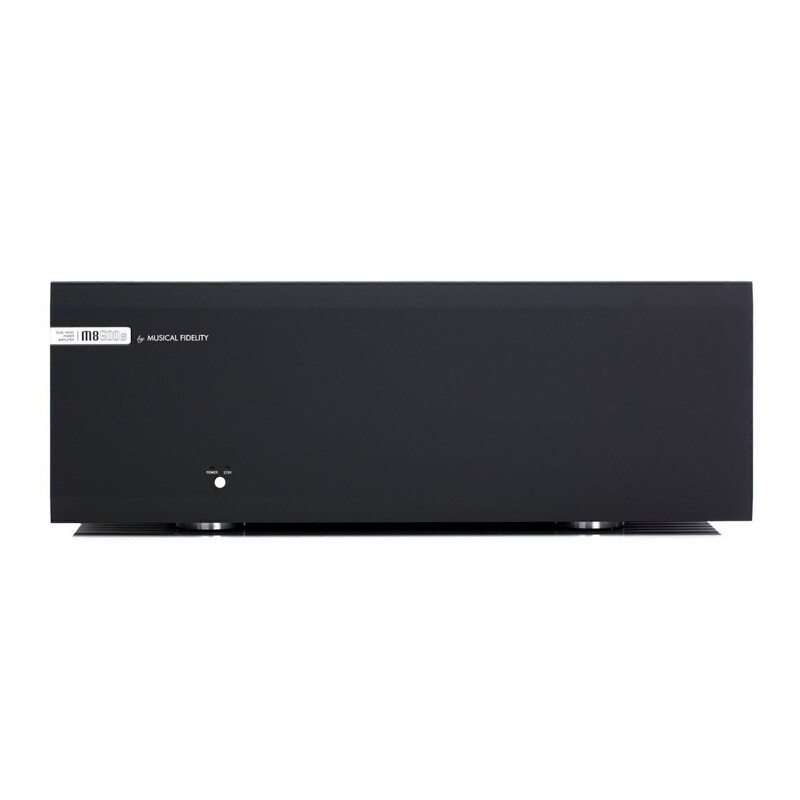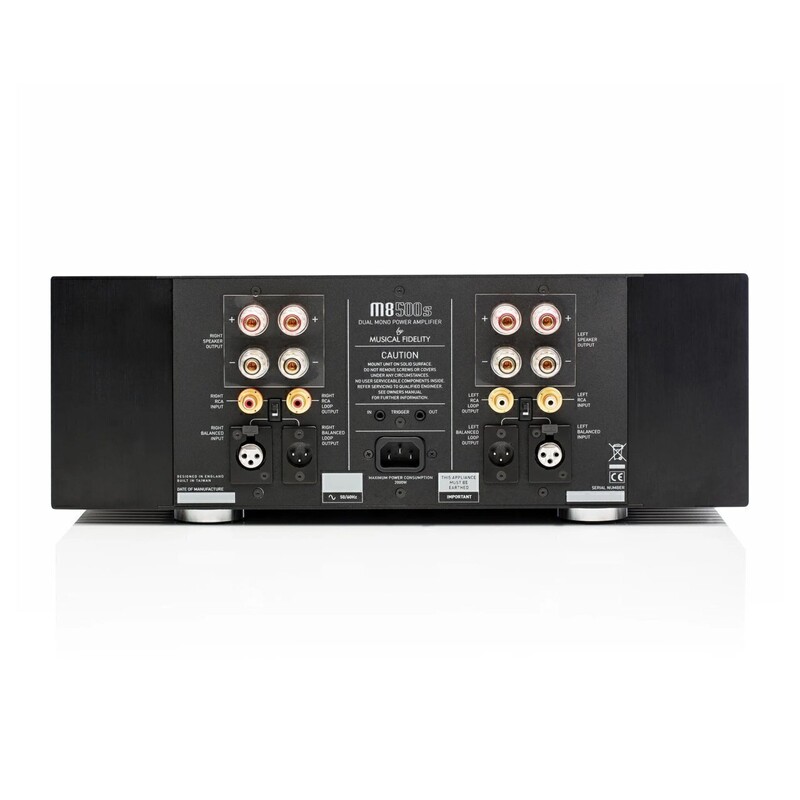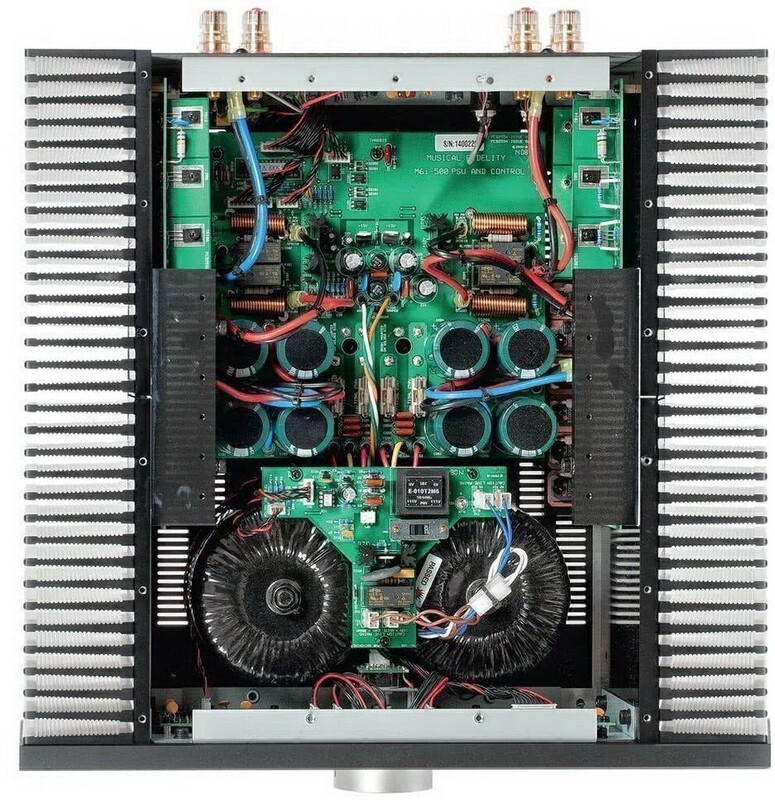Product information
When designing the M8 components, strong investments were made in the most important components for the sound: electronic components (transistors, capacitors, etc.), printed circuit boards and power transformers. Moreover, even premium class components for wholesale purchases do not greatly affect the final cost of the product. The design here obeys the principle of reasonable sufficiency: welded steel chassis, powerful heat sinks of a standard profile, thick front panels without any decorative elements. The only thing that the designers allowed themselves is manual polishing of the front surface and stylish nameplates made of medical stainless steel. And with such strict minimalism, the M8 models look solid and convincing.
The two-channel Musical Fidelity M8-500s is based on the same ideology as the 700m monoblocks, but in a more compact version. When combining the channels in the case, the quality indicators did not suffer, only the output power decreased to 2 x 500 W at 8 Ohms, instead of 700. Although a kilowatt is more than enough not only for stereo, but also for front channels in a home theater. And the economy of space here is very important. The main features of the Musical Fidelity M8-500s are: "double mono" design with a pair of powerful toruses, fully balanced circuitry and power stages capable of delivering up to 200 A loads. Musical Fidelity proprietary circuitry ensures a distortion level of less than 0.007% in the frequency range of 20 Hz - 20 kHz even at nominal power.
The amplifier has both balanced and regular RCA inputs, for which selection a separate switch is provided. There are two pairs of acoustic terminals, which allows you to organize a separate connection of the LF and MID/HF sections in the acoustics. In general, the massive power of the Musical Fidelity M8-500s amplifier still does not guarantee intelligible sound at high volume, but in the 500s the balance between quantitative and qualitative indicators is masterfully observed. At a colossal sound pressure, both intelligibility and timbral accuracy are preserved. Only near the top edge of the dense spectrum of the phonogram can you notice some harshness, but at the same time, the control of the diffusers in the middle and lower bands was previously flawless.
Accordingly, it will be possible to select acoustics not by sensitivity, but exclusively by sound quality. He will cope with any, maintaining complete neutrality.
Media



